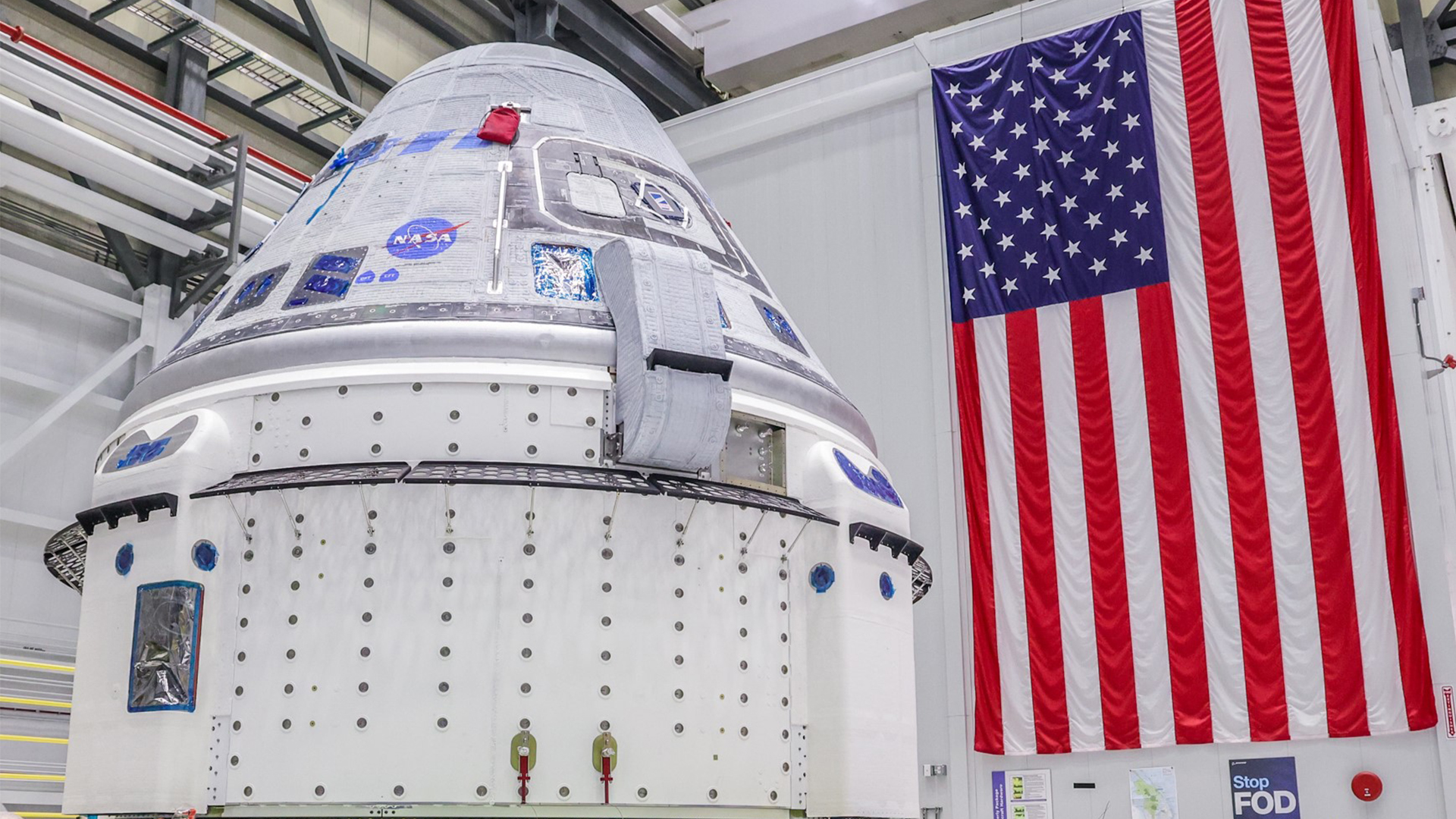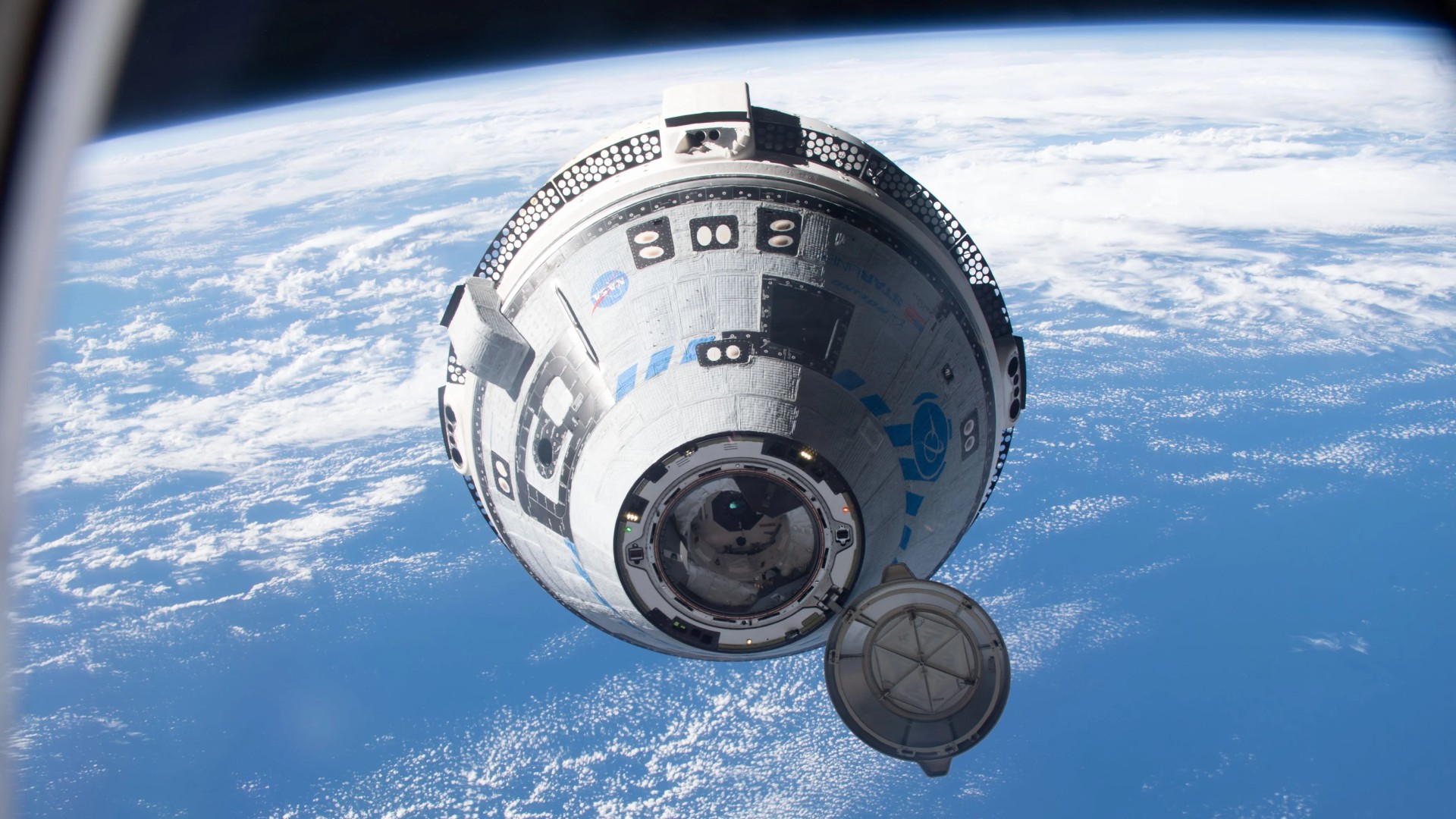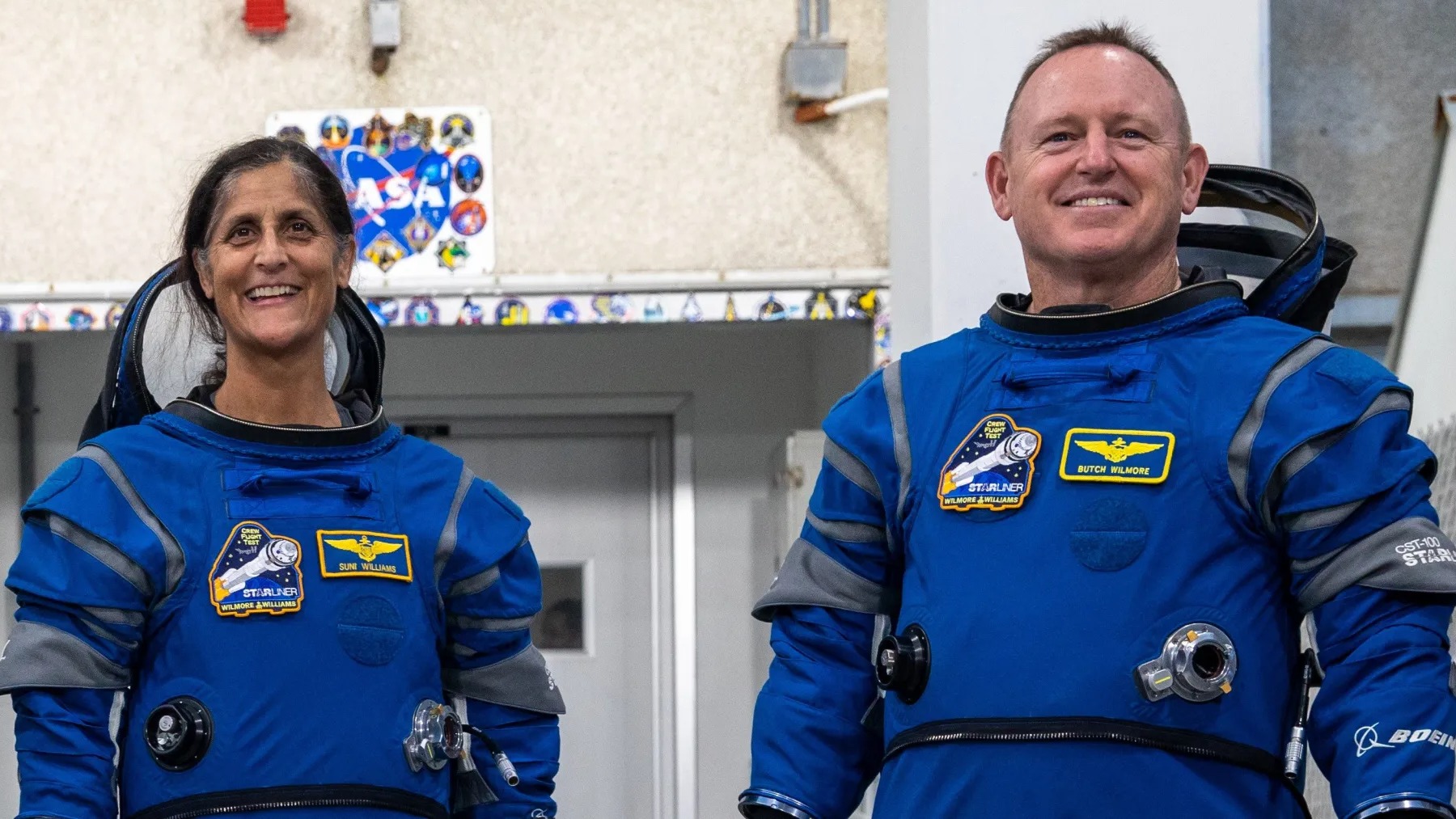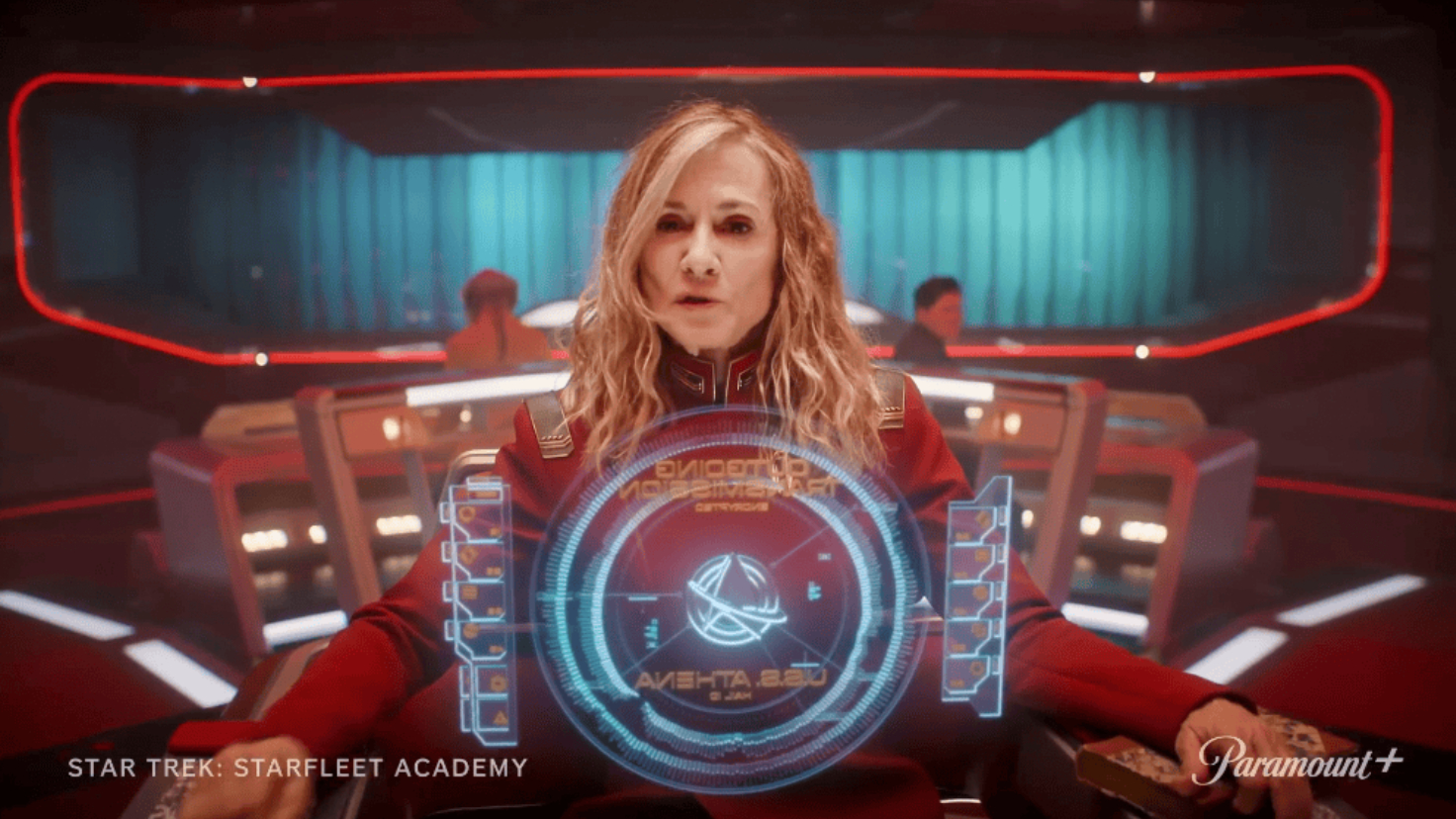Boeing's 1st Starliner astronaut flight test for NASA could launch as soon as May 1
"Bringing along our second human rating vehicle in the period of four years has been a tremendous honor."

HOUSTON — NASA has a new spaceship ready to carry astronauts.
Agency officials said today (March 22) that NASA is ready to go ahead at last with the first astronaut test launch aboard Boeing Starliner. Commander Barry "Butch" Wilmore and pilot Suni Williams, both veteran astronauts, will launch on Starliner to the International Space Station no earlier than May 1.
"The launch date right now is no earlier than May 1. And that's driven by the ISS traffic, as you know it's been a busy year on ISS," said Steve Stich, program manager for NASA's Commercial Crew Program, at a press conference at the agency's Johnson Space Center.
Mark Nappi, Boeing vice president and Starliner program manager, added that the spacecraft and its United Launch Alliance Atlas V rocket could roll to the launch pad at Space Launch Complex-41 at Cape Canaveral Space Force Station in Florida as soon as April 10.
Related: NASA, Boeing delay Starliner capsule's 1st astronaut launch to early May
The announcement caps several extra years of development after the first uncrewed Starliner spaceflight failed to reach the ISS in late 2019.
Boeing and SpaceX were both tasked by NASA in 2014 to create new commercial crew vehicles, with billions of dollars of funding. (Boeing received $4.2 billion while SpaceX received $2.6 billion in those deals.) SpaceX Crew Dragon's first astronaut flight flew in 2020. In the four years since, the company has sent 11 missions to ISS: Eight long-duration professional astronaut missions led by NASA, and three short-duration excursions paid by Axiom Space with a range of people on board.
Boeing's Starliner, however, needed more work. A launch anomaly during the first uncrewed Starliner mission in 2019 forced controllers to abandon their attempt to reach the ISS, although the spacecraft returned to Earth safely under parachute. NASA identified dozens of problems, which Boeing sought to address ahead of a second uncrewed launch attempt.
Breaking space news, the latest updates on rocket launches, skywatching events and more!
The coronavirus pandemic and other technical problems delayed the next launch, but when it went ahead at last in May 2022 the mission did meet all its major objectives — including a successful berthing with the ISS.
However, after that second uncrewed test flight, Boeing identified new concerns with its Starliner spacecraft. The company discovered that tape used extensively through the vehicle was a flammable, requiring the removal of more than a mile of the material from the spacecraft. Boeing also discovered that part of Starliner's parachute system could not handle the required loads that could occur during off-nominal landings and had to modify the system.
"We have primarily been working on getting the vehicle of course ready for flight and solving the two issues that we had back in the summer, which were the parachute system and the tape flammability issue that we had," Nappi told reporters. "We can safely say those issues are behind us."
Having overcome those setbacks, NASA leadership is now looking forward to Starliner's first crewed mission and the versatility it will provide once operational. "It's always tough to fly into space. there's always challenges with every launch vehicle and spacecraft and so for us having that second transportation system is hugely important to us," Stich said at today's briefing.
"Bringing along our second human rating vehicle in the period of four years has been a tremendous honor for our commercial crew team and a tremendous challenge of just getting through all the work to get these two spacecraft, Dragon and Starliner, flying."
Boeing then went ahead on readying the first astronaut mission for Starliner, but development issues forced a lengthy delay from the July 2023 target launch date. Engineers identified a problem with suspension lines on Starliner's parachutes, and found wiring surrounded by flammable tape, among other problems.
Several past Starliner astronauts have been reassigned to other missions, as Boeing and NASA together worked out the kinks. One of those astronauts formerly assigned to Starliner is Jeanette Epps, who ended up flying to the ISS this month aboard SpaceX Dragon instead.
But with operational Starliner missions on the horizon, the agency is now committing to at least three astronauts for Starliner-1 in 2025: NASA astronauts Scott Tingle and Mike Fincke, alongside Canadian Space Agency astronaut Joshua Kutryk, for a normal six-month ISS rotation.
Starliner will provide a second option for running astronauts up to the ISS from U.S. soil, alongside SpaceX. NASA also flies some astronauts aboard Russia's Soyuz spacecraft from Kazakhstan, the most recent example being Loral O'Hara yesterday (March 21). Russia, one of the chief ISS partners, has put some of its cosmonauts on board Dragon as well — and will likely use Starliner in the future.
Pending the results of the crewed flight test, the spacecraft could be certified for operational flights as early as November 2024, with the first operational mission —Starliner 1— launching around spring 2025, Stich added.
Boeing ultimately hopes to launch up to six Starliner astronaut flights for NASA after the crewed flight test under its commercial crew contract with the U.S. space agency, Nappi said. Work on the Starliner 1 spacecraft is underway, with the Starliner 2 mission's capsule in the preparatory stages, he added.
But whether Boeing opts to fly additional Starliner flights for space tourism or private flights, as SpaceX has done with its Dragon spacecraft and Falcon 9 rockets, remains to be seen as Boeing is focused on its NASA commitments, Nappi said.

Elizabeth Howell (she/her), Ph.D., was a staff writer in the spaceflight channel between 2022 and 2024 specializing in Canadian space news. She was contributing writer for Space.com for 10 years from 2012 to 2024. Elizabeth's reporting includes multiple exclusives with the White House, leading world coverage about a lost-and-found space tomato on the International Space Station, witnessing five human spaceflight launches on two continents, flying parabolic, working inside a spacesuit, and participating in a simulated Mars mission. Her latest book, "Why Am I Taller?" (ECW Press, 2022) is co-written with astronaut Dave Williams.


